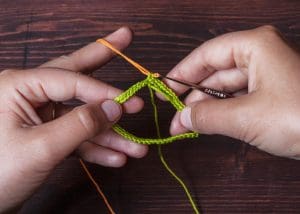Do you have something you really want to learn, but it seems too challenging? One of my great joys in life is finally accomplishing something that took much effort to do. That combination of relief and sense of accomplishment is wonderful! The truth is that it takes time to learn to do those challenging, if frustrating, things! The secret is finding ways to learn easier and faster.
I have some favorite learning tools. Not because they are fancy or new, but because they are tried and true methods for learning new things. Some of them have been used for more than a hundred years and have even been adapted into apps. In a world of newer and faster is better, sometimes we disregard the simple, but in the process end up costing ourselves more in time and money to get the same results.
Our brains are excellent at processing information, but they need clues to recognize that information is important. One of these clues is repetition. Something that is rarely seen is not ranked as valuable information, just think of search engine results.
One of my favorite ways of getting new information into the higher ranked information slots of my brain is by making and using flashcards. Okay, I know that they can take some time to make, and that is the point! When we dedicate more time to information, our brains place that information into higher ranked spots in our internal search engines. But our brains are also super-efficient in organizing the information, so you do not need to write a novel, just keywords or images to help with their placement in our super-efficient memory filing systems.
Color is another favorite tool, which may not surprise those who know me. How is color a tool? Well, I hope you will be creative in how you use color in learning new materials. I use color as a clue that I am working with a main theory, a subcategory, or a new topic. In learning a new language, I might use one color for nouns and another for verbs, or for categories like people or animals. The trick is to give my brain a clue as to where the information belongs, in order to speed up the memory process.
Some information is just needed for a temporary time and some I need to know quickly. Memorization works well for this. For quick memorizing, I do not make flashcards, but I will write down the terms several times in different colors. This is like spelling word practice for the spelling tests you had as a child where you would write the words several times to practice them, but it’s more fun and memorable in color.
The last learning tool in my favorite toolbox is experiencing or exposure to the concepts. It is harder to understand new ideas if you do not see how they are used. I can use stories, videos, discussions, or hands on experiments to gain greater understanding. Doing this alongside someone whom I can ask questions of helps tremendously! When I was learning to crochet it was so helpful to have a friend point out that I had the tension all wrong.
These tools, while not new, are effective. Give them a try the next time you are learning something new and challenging! The secret for conquering hard things is spending effective and efficient time doing that hard thing. Here are some books about learning and the brain.
This video for our ESL students utilizes some of these tools. Do you recognize which of these learning tools were used in the video?







Add a comment to: The Secret to Learning Hard Things